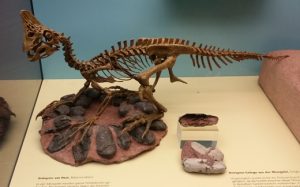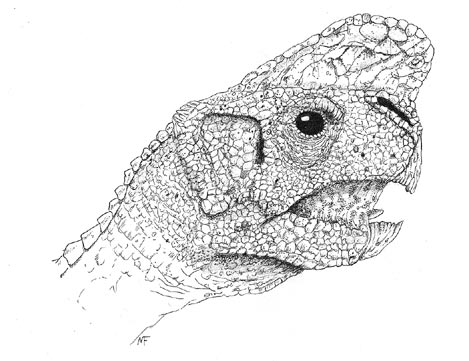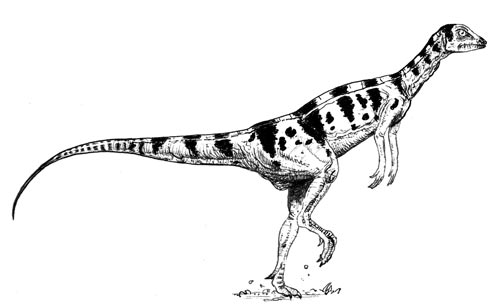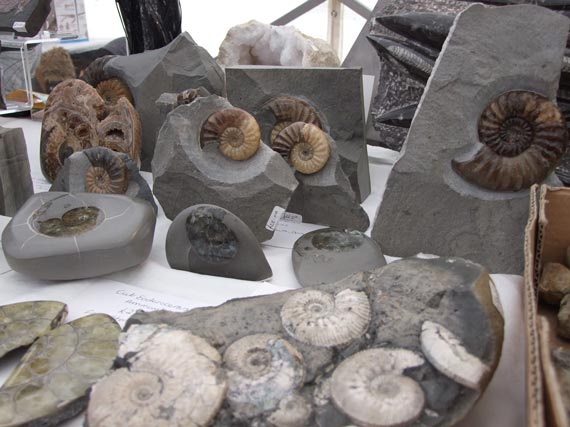Fossils returned after Police Investigations
Rare dinosaur eggs have been repatriated to China from the USA.
Dinosaur Eggs
The high prices paid for fossils has continued to fuel the illegal trade in dinosaur fossils and other prehistoric animal material. However, smugglers and those persons involved in the illicit sale of fossil material can expect to face the full weight of the law as countries increasingly work closer together to stamp out such practices. In November, we reported on the blatant and deliberate vandalism that took place on the Isle of Skye as Jurassic strata was destroyed in what the authorities believe was an attempt to remove marine reptile bones from a cliff face. So far the culprits have not been caught but the investigation is continuing, to read more about this instance of palaeontological plunder:
Isle of Skye incident: Important Jurassic Site is Ransacked.
Some good news, two clutches of dinosaur eggs are being returned to their countries of origin after the result of successful enquiries by government authorities. Twenty-two rare dinosaur egg fossils that were illegally smuggled into United States were handed over to Chinese officials this week. The eggs, believed to have been removed from Upper Cretaceous strata in China are so well preserved that the majority of the unhatched eggs still show evidence of the dinosaur embryos inside them.
A Nest of Dinosaur Eggs

A small theropod dinosaur sitting on her nest. Picture credit: Everything Dinosaur.
Picture credit: Everything Dinosaur
Commenting on the success of the operation, Qiu Shaofang, Consul General of China in Los Angeles (California), stated:
“This is the third time the U.S. government has returned smuggled fossils to the Chinese government since 2009.”
Dinosaur fossils
The fossils had been unearthed in Nanping Basin in south China’s Guangdong province, and the eggs are a rare example of Oviraptor fossil material. Oviraptor is the name given to a genus of extremely bird-like dinosaurs known from Cretaceous Mongolia. Although the name literally means “egg thief”, scientists now know that these small theropods, brooded their nests in the same way that most modern birds do today. A spokesperson from Everything Dinosaur commented:
“Oviraptor was given a really bad press when the first fossils of this small theropod were discovered. Found in association with dinosaur eggs, it was at first thought that this dinosaur had been trying to steal eggs from the nest of another dinosaur called Protoceratops. Discoveries from the 1990s and from the noughties have shown that this dinosaur was actually a devoted parent, taking great care of its eggs and most probably being equally devoted to its brood once the eggs had hatched.”
In 2007, agents of the U.S. Immigration and Customs Enforcement seized the fossilized dinosaur eggs in a raid on an auction house. Victor Rodgers, assistant U.S. Attorney for the Central District of California said:
“The item was being auctioned for sell by an auction house in LA when it was seized for $450,000 U.S. dollars and the buyer was prepared to go forward with the sell.”
Now the eggs are being returned back to China, enabling them to become part of a study programme into the nesting and paternal behaviour of Dinosauria.
An Illustration of a Typical Oviraptor

Picture credit: Everything Dinosaur/Mike Fredericks
To view models of Oviraptor and other bizarre theropod dinosaurs: Dinosaur and Prehistoric Animal Models and Figures.
The second clutch of eggs, consisting of three specimens of dwarf dinosaur eggs is being returned by Italian authorities to their home in Romania. The eggs, which also date from the Late Cretaceous will most likely be put on display at the Antipa Museum in Bucharest (Romania). During the Late Cretaceous much of Europe as we know it today was underwater, north of Africa there were a series of small islands, upon which a diverse and unique fauna and flora thrived. Like many other types of animals and plants found on isolated islands today, the organisms cut off from the mainland, evolved into distinct species. Many dinosaurs, in a response to the limited food resources available became dwarf versions of their mainland cousins.
The three eggs were stolen around 2004-2005 from the important fossil site in Tustea- Hateg,(Hateg Formation), Hunedoara county, in the heart of Romania. The thief sold the eggs to an Italian collector who kept them in a warehouse together with other 11,000 artefacts. The Italian Police found them during a search of the premises. Scientists believe the eggs were laid by a dwarf titanosaur, such as Magyarosaurus. Although related to gigantic dinosaurs such as Argentinosaurus and Paralititan, Magyarosaurus was only about the size of a horse. Where food resources are limited such as on a small island animals can either eat themselves into extinction or adapt over many generations. The smaller you are the less food you need and this leads to dwarfism amongst island species in many cases.





